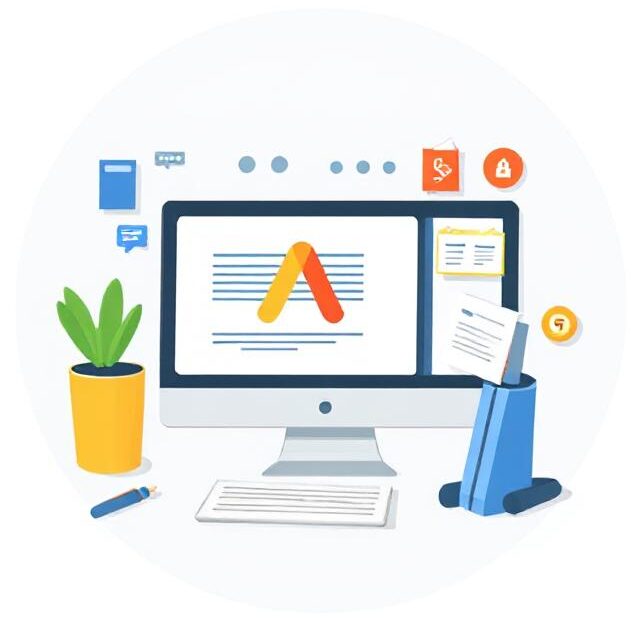Google Ads is one of the most competitive advertising platforms. With thousands of businesses vying for the same clicks, your ad copy must stand out. That’s why mastering high-converting Google ad copywriting tips is essential. A well-crafted ad can significantly boost click-through rates (CTR), improve Quality Scores, and ultimately drive more conversions at a lower cost.
In this article, we’ll break down actionable strategies to write ad copy that captures attention, compels action, and outperforms your competitors.
Why Copywriting Matters in Google Ads
While targeting and bidding strategies are important, your ad copy is the first thing users see. A great ad convinces searchers that your solution is the one they need—instantly.
Strong ad copy can:
-
Increase CTR.
-
Lower cost-per-click (CPC).
-
Improve ad relevance and Quality Score.
-
Drive more conversions.
In short, copywriting is where clicks turn into customers.
1. Start with Keyword Alignment
The first step in writing high-converting ad copy is keyword alignment. Users want to see ads that match their search intent.
For example:
-
If someone searches “affordable web design services”, your ad headline should include “Affordable Web Design Services”.
By mirroring the search query, your ad feels more relevant, leading to higher CTR and Quality Scores.
2. Craft Compelling Headlines
Your headline is the most critical part of your ad—it’s what grabs attention. Use these tips for high-performing headlines:
-
Include keywords for relevancy.
-
Highlight benefits (“Boost Sales Today”).
-
Create urgency (“Limited Offer”).
-
Add numbers (“Save 30% on Hosting”).
A powerful headline increases the chances of users clicking over competitors.
3. Focus on Benefits, Not Just Features
One of the golden high-converting Google ad copywriting tips is to focus on what the user gains. Features describe, but benefits persuade.
For instance:
-
Feature: “24/7 customer support.”
-
Benefit: “Get instant help whenever you need it, day or night.”
Benefits connect emotionally with the audience and demonstrate value.
4. Use Emotional Triggers
Emotions influence decisions more than logic. Incorporating emotional triggers like urgency, fear of missing out (FOMO), or exclusivity makes ads more persuasive.
Examples:
-
“Don’t Miss Out on 50% Off Today Only.”
-
“Join Thousands of Happy Customers.”
These subtle emotional cues can boost CTR and conversions.
5. Add Clear Calls to Action (CTAs)
Never assume users know the next step. Strong CTAs guide action and increase clicks. Examples include:
-
“Shop Now.”
-
“Get a Free Quote.”
-
“Start Your Free Trial.”
CTAs should be short, actionable, and benefit-driven.
6. Leverage Ad Extensions
Ad extensions make your ad bigger and more informative, increasing visibility and CTR. Popular extensions include:
-
Sitelinks (extra links to key pages).
-
Call extensions (direct phone numbers).
-
Location extensions (map addresses).
-
Promotion extensions (highlight discounts).
By adding more value, extensions improve both performance and credibility.
7. Test Multiple Variations
Even the best-written ad can be improved. Always A/B test different versions of headlines, descriptions, and CTAs.
For example, test:
-
Headline A: “Affordable SEO Services”
-
Headline B: “Boost Rankings with Expert SEO”
Over time, testing reveals which combinations resonate most with your audience.
8. Incorporate Social Proof
Social proof builds trust instantly. If possible, use numbers, reviews, or awards in your copy.
Examples:
-
“Trusted by 10,000+ Businesses.”
-
“Rated #1 by Industry Experts.”
Adding credibility factors sets you apart from competitors who make unverified claims.
9. Keep It Simple and Concise
Google Ads has strict character limits, so clarity is key. Avoid jargon and fluff. Each word should push the reader closer to clicking.
Example:
-
Weak: “We provide innovative and high-quality solutions for modern businesses.”
-
Strong: “Boost Sales with Proven Marketing Solutions.”
Clear, concise copy always outperforms complicated language.
10. Match Ads to Landing Pages
The journey doesn’t end with a click. If your ad promises “Free Shipping on Shoes,” the landing page must highlight free shipping immediately.
Consistency between ad copy and landing page messaging improves user experience, reduces bounce rates, and increases conversions.
Final Thoughts
Writing ads that convert isn’t just about being creative—it’s about being strategic. These high-converting Google ad copywriting tips can help you align with user intent, stand out from competitors, and maximize ROI.
From compelling headlines and benefit-driven messaging to ad extensions and testing, every small improvement compounds into big results. Remember, ad copy is often your first impression—make it count.
By implementing these strategies, you’ll write ads that don’t just get clicks, but also turn those clicks into loyal customers.
Also, you can learn more about PPC Campaign Mistakes here.
